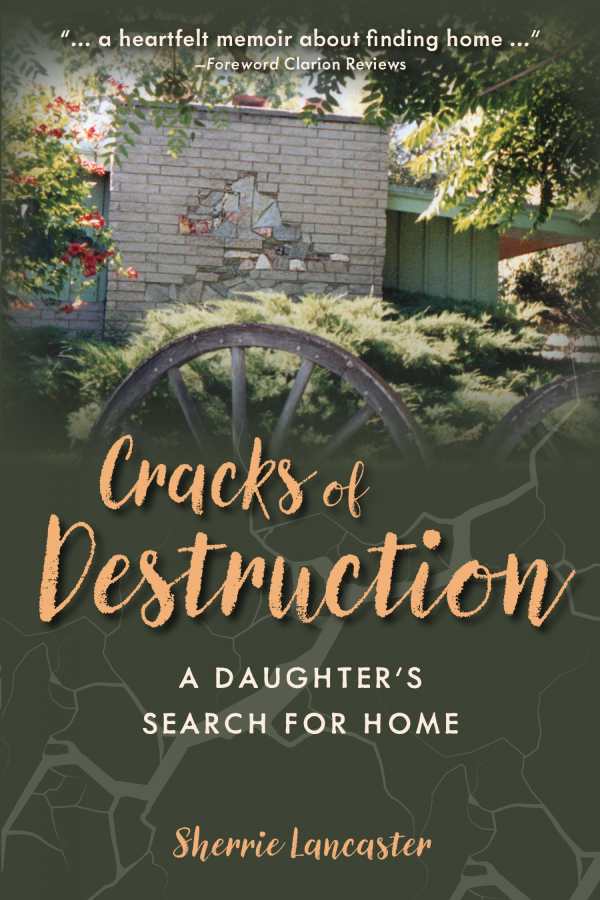Cracks of Destruction
A Daughter’s Search for Home
Bittersweet as it accepts past pains for the sake of personal growth, Cracks of Destruction is a memoir about a fractured childhood.
Sherrie Lancaster’s Cracks of Destruction is a poignant memoir about building a life after a mother’s abandonment.
Lancaster was ten years old when her mother left their family for another man. This event marked before and after points in her life, starting a long period of grief and confusion. Lancaster and her favorite brother Dean were convinced that their mother leaving was somehow their fault, and they made efforts to make themselves perfect so that she would come back. When their father became involved with a woman who resented his children, they felt even more abandoned. Moving from one relative’s house to another, they seldom spent a year in the same place. In adulthood, Lancaster continued to pursue stability and a sense of home—and hoped to come to peace with her mother leaving.
Narrated with a sense of immediacy, the book conveys Lancaster’s feelings of fear, desperation, and confusion with clarity. In covering her childhood, it relates the actions of most adults without fanfare, though with a great deal of empathy, even their decisions that left her jumping from one living situation to another in her youth. The book’s expressions of rage and fear are clear; Lancaster argues that her own behavior shifted as a result of adults’ decisions. Even more empathetic are the book’s memories of Lancaster’s life with her mother before she left, which feed into her continued desire to reconnect later. Hints of dysfunction are dropped alongside expressions of longing for lost innocence.
Though various relationships are covered in the book, Lancaster’s bond with Dean is the best developed. Mutual love pervades the scenes that they share, even when they are both too heartbroken to show it. In adulthood, their relationship exemplifies strength and open affection—a bright spot in an otherwise fractured family story. And Lancaster’s relationships with Dorothy and Harold, frequent patrons of the bar where her father works, are also a source of respite. The book recalls them taking Lancaster under their care and fulfilling her material and emotional needs.
However, there are some distracting stylistic choices in the prose. References to Lancaster’s mother’s abusive partner are italicized; he is never named, just referenced as he and him. Sometimes this results in multiple italicized words within single paragraphs and even sentences, interrupting the narrative’s flow. Further, Indigenous people are referenced in dated terms to jarring effect.
Self-acceptance is key in Cracks of Destruction, a heartfelt memoir about finding home despite a rough early start.
Reviewed by
Carolina Ciucci
Disclosure: This article is not an endorsement, but a review. The publisher of this book provided free copies of the book and paid a small fee to have their book reviewed by a professional reviewer. Foreword Reviews and Clarion Reviews make no guarantee that the publisher will receive a positive review. Foreword Magazine, Inc. is disclosing this in accordance with the Federal Trade Commission’s 16 CFR, Part 255.

